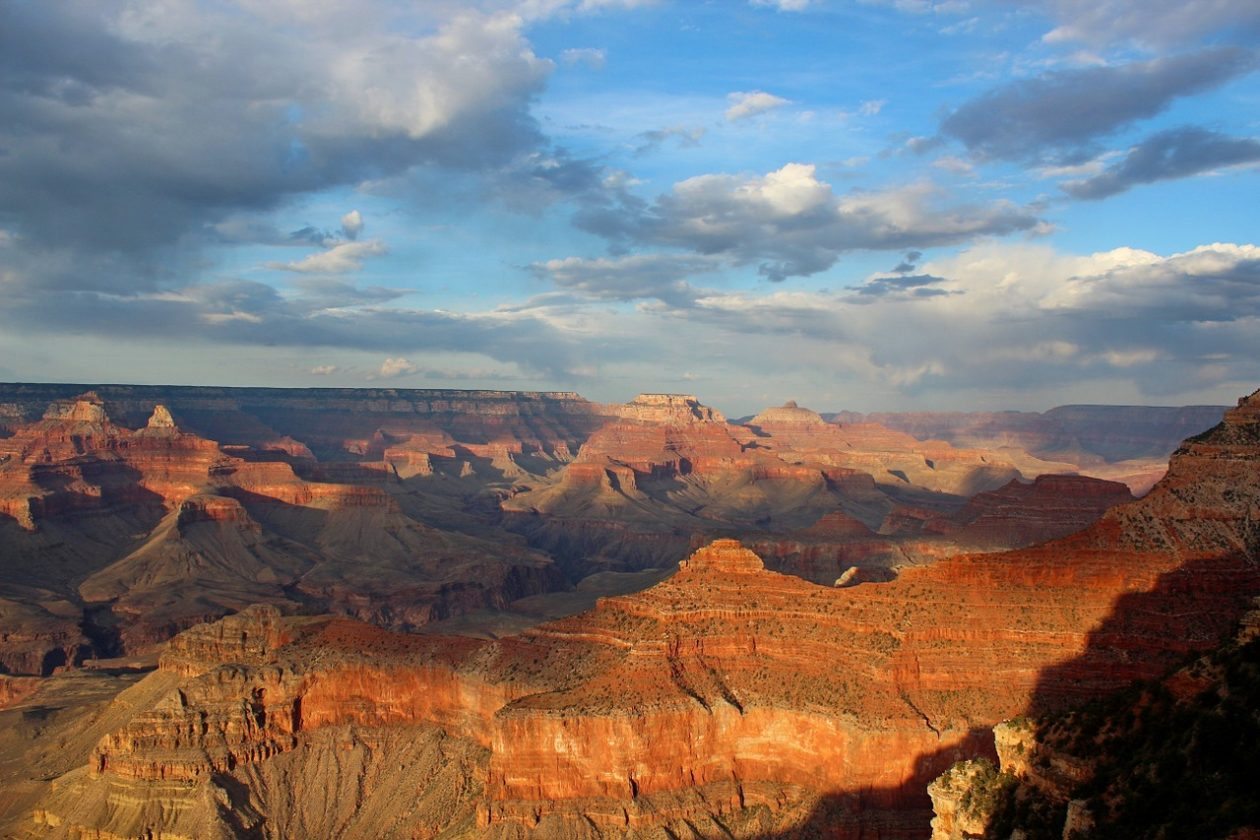
How are the Grand Canyon and Intellectual Property Similar- Grand Canyon Nation Park- 100 Year Anniversary!
Imagine going on vacation, backpacking across raw land, and on your journey you discover a wonderful place that millions of people would want to visit. An ancestor of mine made a similar discovery.
My ancestor, Edwin Dilworth Wolly, Jr. was working as a cattle rancher on the north side of the Grand Canyon. It was not known as the Grand Canyon back then, because it was not recognized as a national treasure. His daughter tells the following story:
“My father was one of the first pioneers of the Grand Canyon. Back in the early [18]80’s cattle roamed all through the Kiabab Forest and down into the breaks of the canyon. It was while riding after them that Father got his first view of the wonderful gorge. He was so overcome with it that he almost fell from his horse. As he stood there gazing into the depths, he felt like the tiniest atom, and he bared his head in reverence to the wonderful works of the Creator.”
“When he was able to express himself, he said to his cowboy companions ‘this is one of the wonders of the world. People will come from all over the globe and pay large sums of money to gaze at what we now behold!’ They laughed in derision, as they saw nothing but a h— of a place to get cattle out of.”
My ancestor, Edwin was so impressed that he worked to improve the Grand Canyon and provide access to many people so that they could visit and enjoy the natural beauty of this treasure. Edwin built a tram to cross the Colorado river at the bottom of the canyon so that even when the river was very high and impassable, people could access more of the canyon. Edwin also took many people including famous people like Buffalo Bill on tours of the canyon, and we believe that these efforts led to President Teddy Roosevelt visiting the canyon and preserving it as a national park where millions of visitors now get to share.
If Edwin had kept his discovery only to himself and had not made improvements and shared his ideas and vision with others, then someone else would have been the first to develop a crossing over the Colorado river and enjoy the benefits of the business that went with it.
What is Intellectual Property? It is property that has value. An idea is property like raw land. Like real estate, when you build on an idea, the property has more value.
An idea by itself is like an undeveloped piece of land, not connected by any roads or utilities. If raw land is not improved, it still has value, but can be difficult to sell. The same is true with Intellectual Property.
How do you “develop” a raw idea into a valuable asset? If you were to discover a beautiful piece of land that others did not value, the first thing you might do is prepare to purchase or lease the land. You might invest in studies and tests to make sure that your vision of the land is possible and that there are no hidden risks like toxic waste or a fault line that could ruin your plans.
Similarly, when an entrepreneur has an idea, they need to do some research to find out if they can get ownership of the idea. For example, an idea for a new brand name and marketing around that name might not be available. Valuable research can be conducted into what other brands already own. An idea for a new tool or medical device may require research into prior patents.
If the research into the idea shows that it is available, then securing ownership of the idea may be the next step.
An application for a patent or a trademark is like an option contract on a piece of land. The application can become ownership, but is not ownership yet. A developer of land may get an option contract while they study the business model of building on the land. An entrepreneur may also want to file a patent or trademark application and then study the business model to determine if people will buy at a price that allows them to make a profit.
Like land, an idea has a much lower value when there is nothing built on it. But if the right things are built on it, the value of both land and ideas can become very valuable.
For example, the idea of McDonald’s restaurant and marketing with golden arches, play places, a clown (Ronald McDonald) and all the other marketing that goes into the McDonald’s brand have very little value if they are just on paper, but when they are actually built, they become very valuable. McDonald’s has built the brand for over 50 years and a search for trademarks in the United States Patent and Trademark Office shows over 1000 trademark applications for “McDonald’s”, most of which are owned by McDonald’s Corporation.
Similarly, the idea of an electric car with high tech gadgets, including self driving features has some value on paper by itself, but has a much greater value if it is built into companies like Tesla, Waymo and others.
Tesla alone has over 250 patents worldwide, but the value in those patents is greatly increased because of the hundreds of thousands of cars that Tesla has sold.
One valuable strategy to increase the value of Intellectual Property in your business is securing your ideas with multiple patents and trademarks and then building on your ideas.


